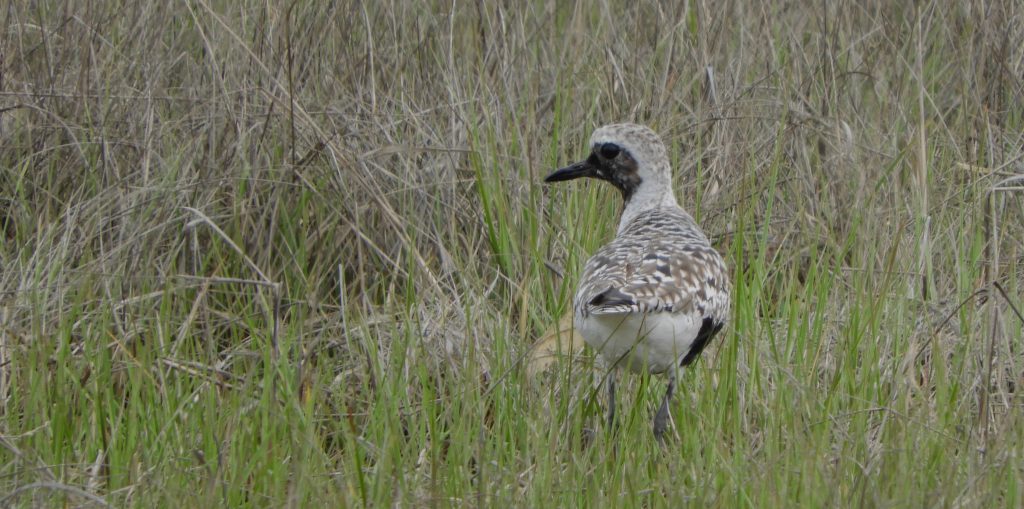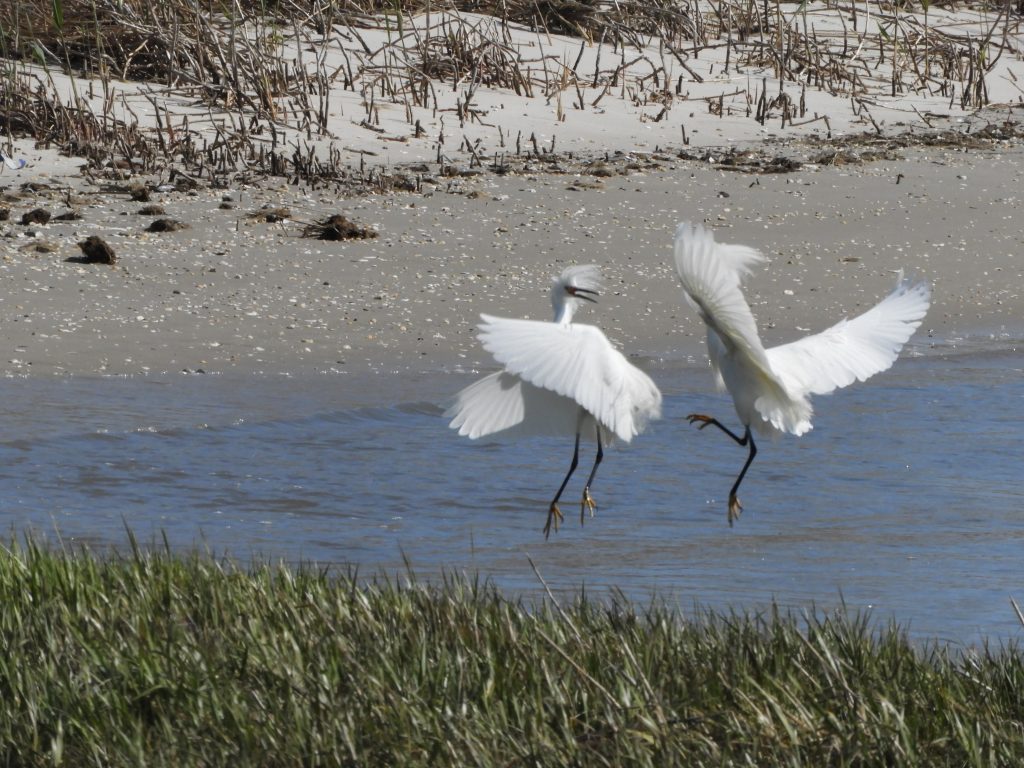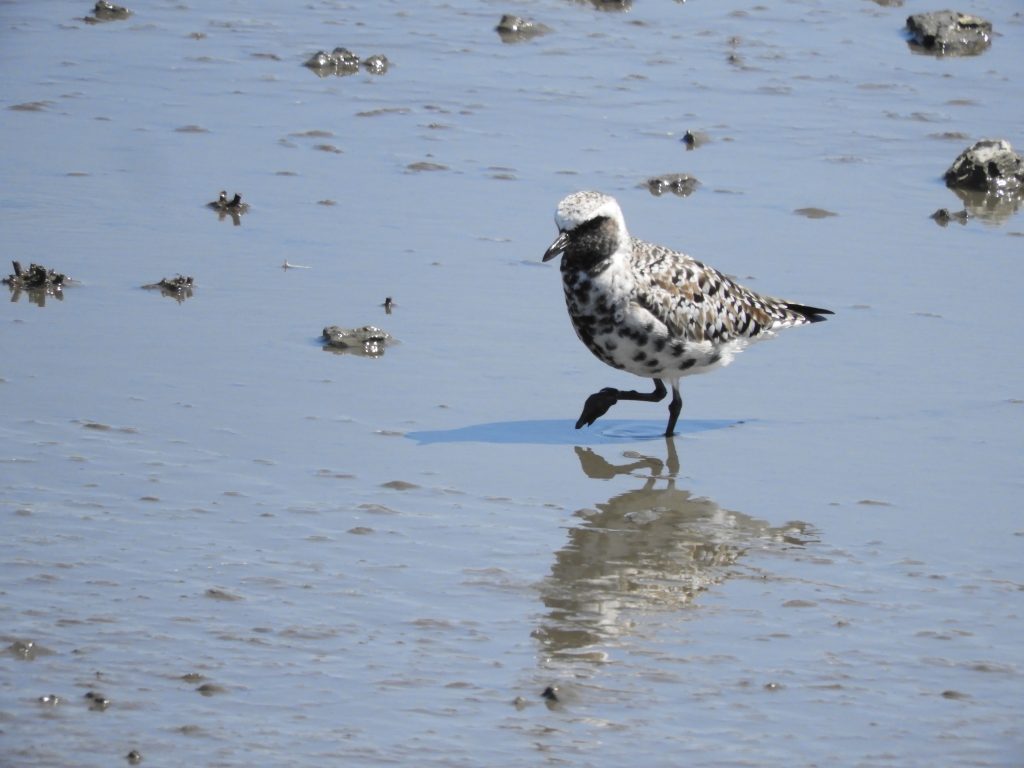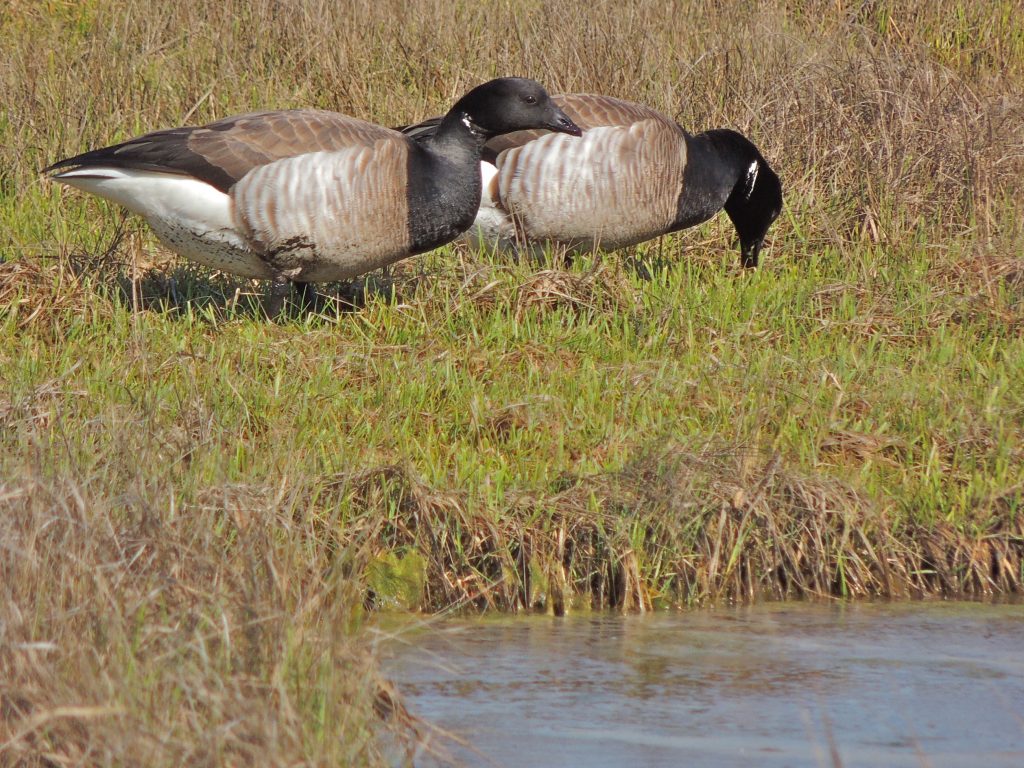
Matts Landing, Heislerville, New Jersey. April 29. 2022. Although it takes nearly twelve hours of driving, a birding trip to the Cape May area has always been worth my while. I arrived this morning with the prospect of a full day of birding ahead, I was reasonably fresh and eager to get going having made an overnight stop just an hour or so north of Philadelphia.
It’s the geography of Cape May that makes it a birding hotspot. The low-lying, well forested and marsh-girdled peninsula stands on the north side of the shortest crossing point of the wide Delaware River estuary. It is on the Atlantic coastal route of spring migrants, millions of smaller forest and inland birds as well as shorebirds, all heading north. It was already warmer than Ontario, perhaps three weeks ahead in unfolding spring. It was bright and spring green although a touch cool especially exposed to the brisk west wind.
I made my start at Matt’s Landing, an out of the way, elevated, causeway with open waters to one side and enclosed ponds on the other. It was a little after high tide which helped, because at low tide shorebirds disperse to feed on the millions of acres of exposed mudflats, while now, at high water they gather in large groups in peaceful refuges like these ponds. The best spring-migrant days are yet to come but I was content with a fast-growing tally including many, easy to observe, Willets, Snowy Egrets, Semi-palmated Plovers, Dunlin, Sanderlings, Greater and Lesser Yellowlegs and, easily My Bird of the Day a Black-bellied Plover.


This single bird today (above) had me baffled for a while, I was in half a mind to call it an American Golden Plover. Later with the luxury of internet in the comfort of a motel room, it became clear that it was a Black-bellied Plover. The two species look alike through the fall and winter months and my rather confusing bird was in mid-moult. It’s been some years since I last saw one and I remember now, from previous visits, that Black-bellied Plovers are abundant here in May; a week or two later and there would be no doubt. And, in any case, American Golden Plovers tend to migrate up the middle of the continent rather than along the Atlantic coast.

Later I followed a trail out over an expanse of salt-marsh. The wind rather took the fun out of it but birding was easy pickings: Ospreys on and around nest platforms, a flock of 14 Brant Geese, a Tri–colored Heron, many noisy Willets, a handful of Least Sandpipers and the sound (but not the sight) of Clapper Rails made it all very satisfying.
The weariness of my long drive faded.